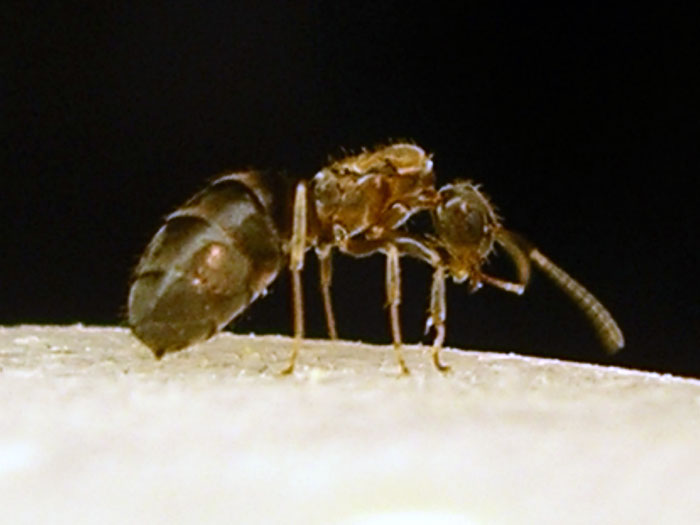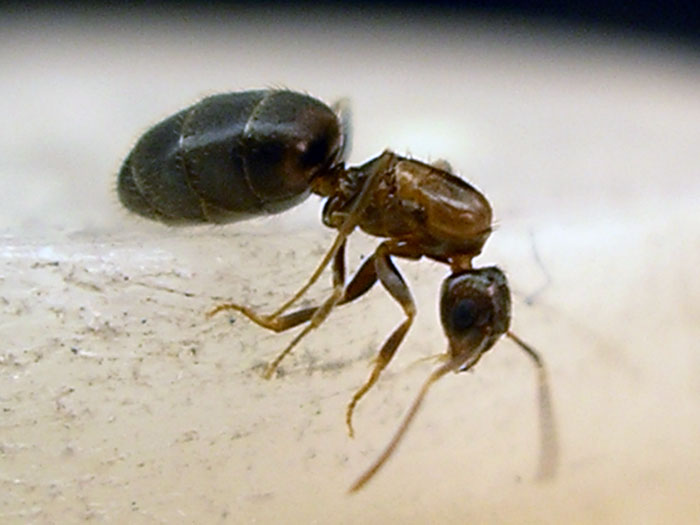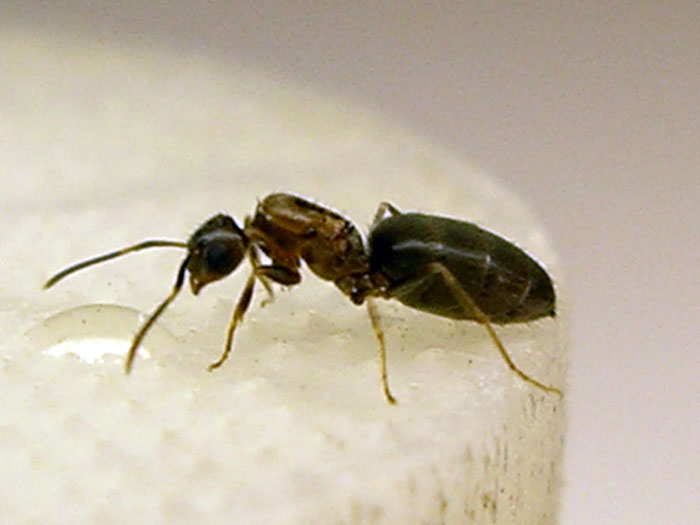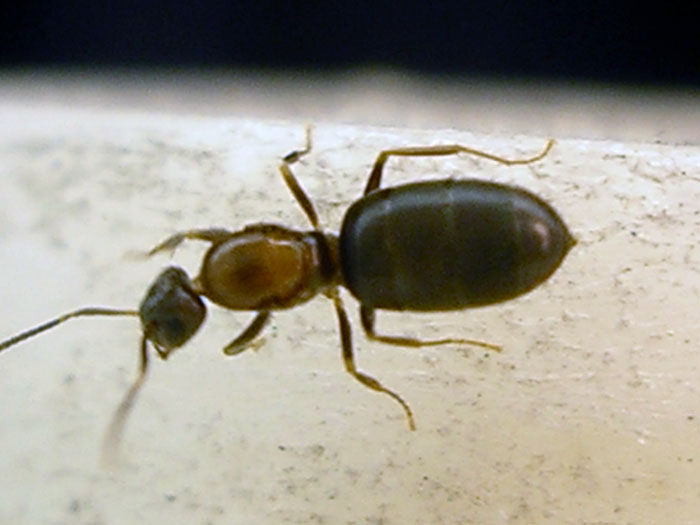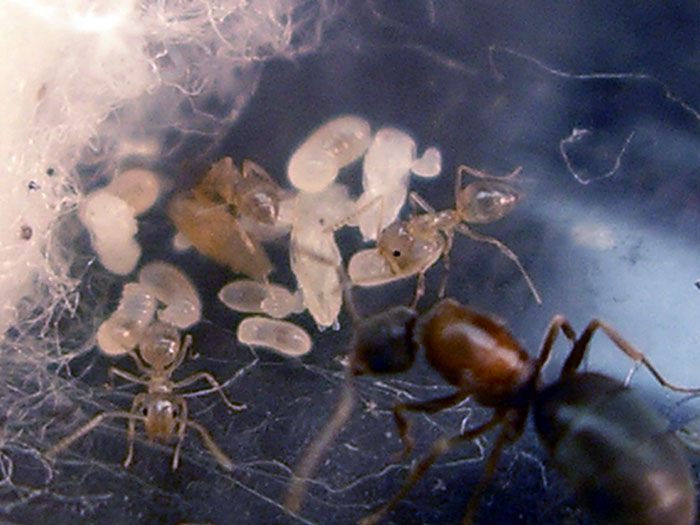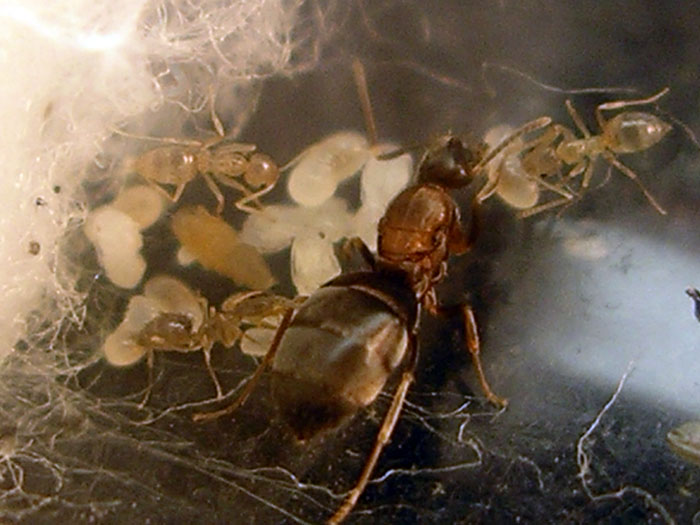Date found: 9-14-2013
Location: Indio, California.
Habitat: High desert, wandering on the ground at a gas station.
Coloration, hue and pattern: Dark brown head and gaster, red thorax.
Length: 5mm.
Unlike the other queen I found that night at that gas station, this queen's pupae were all naked, there were no cocoons at all.
